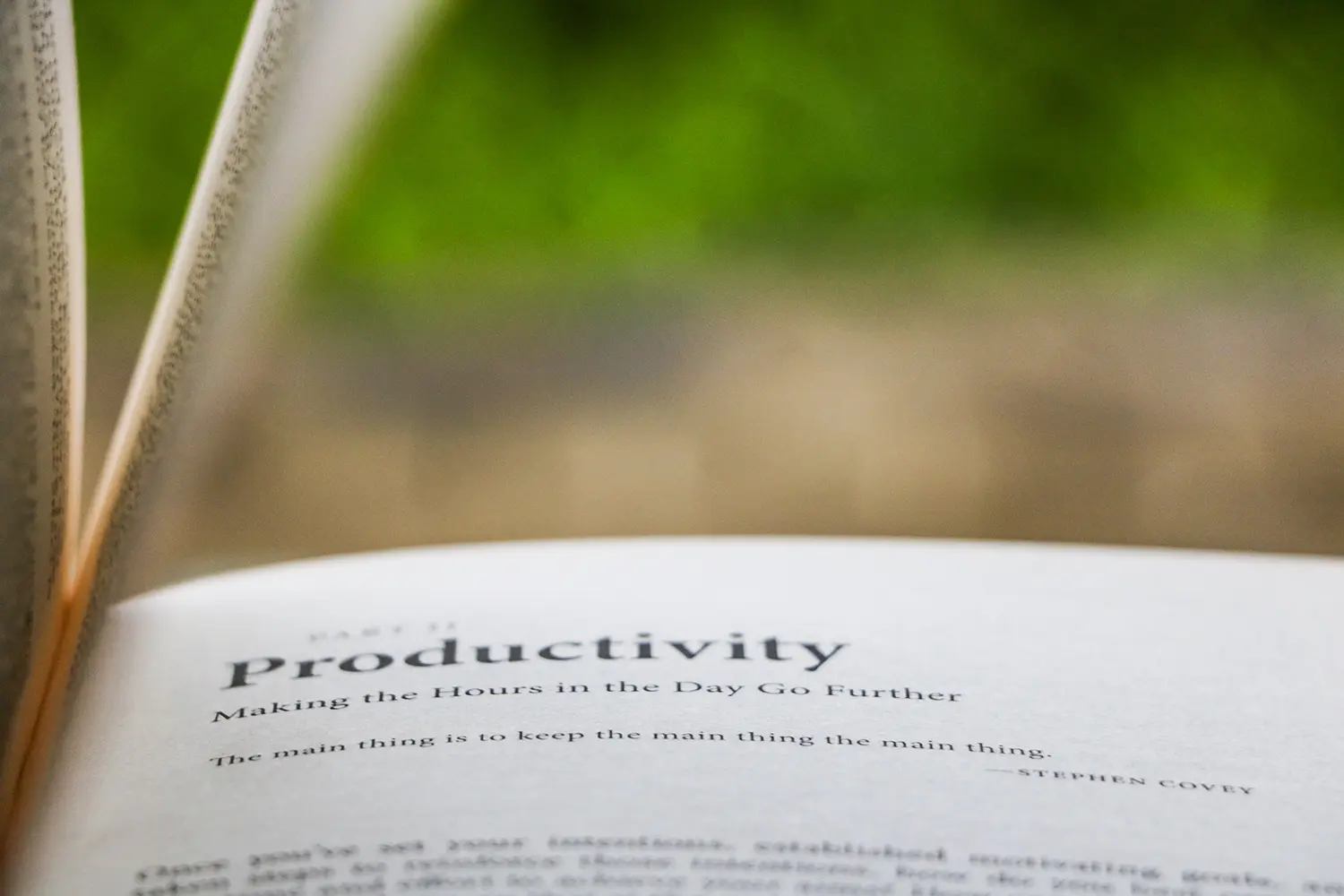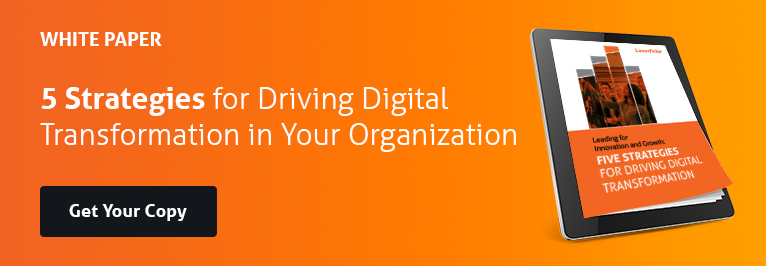Efficiency is a quality many companies and employees are proud to tout. From making 2,000 widgets a day to processing several dozen emails within an hour, being efficient is a badge of honor in the working world.
The benefit of efficiency is that it can be relatively easy to measure. As management expert Peter Drucker once said, If you can’t measure it, you can’t manage it. So, finding something you can measure “ whether it’s email messages or widgets “ makes it easier to improve your efficiency by making more of the output while using less money, less time, or both.
The problem is focusing on efficiency to the omission of everything else can mean that you’re focusing on the wrong things. Is it useful to generate more email messages if people aren’t clicking on them? Is it a good use of your time to write more and bigger reports if people don’t read them?

The difference between efficiency and productivity
There’s a big difference between being busy and being productive, warns Stephen Dubner in Freakonomics.
Companies may be zeroing in on the wrong thing. Instead of looking at efficiency, corporate workers should be looking at productivity, writes Michael Mankin in the Harvard Business Review. The best companies are more than 40 percent more productive than the rest, which results in higher profits operating margins 30“50 percent higher than industry peers and faster growth.
Efficiency is about doing the same with less, Mankin writes. Companies most often improve labor efficiency by finding ways to reduce the number of labor hours required to produce the same level of output. This translates into savings because the company spends less on wages and other labor-related costs. Efficiency, then, is about shrinking the denominator inputs (headcount, labor hours) in an effort to improve profitability.
In contrast, productivity is about doing more with the same. With higher labor productivity, a company can produce more goods and services with the same amount of relative work, Mankin writes. In contrast to efficiency then, productivity is about expanding the numerator, the output, in order to deliver greater top-line growth from the same workforce.
Productivity is the key to everything, says Steve Levitt in Freakonomics. If you can be 10 percent faster at getting the same thing done, then you’ve got 10 percent of your time to do something you’d rather do. When it comes to economics, if there’s a single measure we should care about, it’s productivity of workers.
In fact, Mankin writes, corporate America may have achieved all it can from efficiency and must look at productivity “ doing things differently “ if it wants to continue growth. Without top-line growth, continuing to wring out greater profits through efficiency has become the managerial equivalent of attempting to squeeze blood from a stone, he writes.
How technology impacts productivity
People like to look at technology as a way to improve efficiency, but it may just be creating more work.
In an Economist Intelligence Unit survey, 55% of respondents said they spend at least 16 hours a week working with or processing documents (such as forms, e-mails, manuals, presentations, or contracts) an average of more than 3 hours per day. Nearly half (45%) said they spend at least four hours per week simply following up on documents they distribute to see if they have been received, approved, or acted upon. And when they need something quickly, 61% of respondents said that established processes occasionally or frequently interfere with the ability of colleagues elsewhere in the organization to respond to their requests.
The best way to achieve more productivity is to look at the different ways that technology can do a job rather than re-creating manual processes with the technology, says Charles Duhigg, author of Smarter Faster Better, on Freakonomics.
Automation brings its own set of challenges. Maybe you made the classic mistake of just taking your paper process and making it digital “ which, as you’ve likely found out, just means you took an inefficient paper process and created an inefficient digital process.
Perhaps you automated processes based on how you interacted with paper. But with digital processes, work that was sequential can now go in parallel. Because your processes are digital, it is a lot easier to improve the entire process. Automation provides a consistent framework with which to store accurate and complete process information. In the past, organizations have relied heavily on anecdotal information when improving processes, but the data gathered from automated workflows enables an organization to accurately examine how people are using or interacting with documents.
How digital transformation is driving productivity
While people like to point to digital transformation as a way to increase productivity, it’s not necessarily the digital transformation itself that is changing things. Rather, it’s the fact that digital transformation is causing us to re-examine the business processes in an organization “ or, at least, it should be.
There’s this debate about whether the digital revolution is really increasing productivity, Duhigg says. And when economists and people with common sense take a step back, what they say is, ˜Look, it’s not about all these gadgets and apps; it’s about learning new ways to think about possibilities, new ways to think about our capacity for work.’ And when that really gets spread through the population, that’s when productivity really increases.
With true digital transformation, you’re focused on innovation. You’re aligning your processes to reflect your business objectives and finding ways to use the information you already have to improve not just the present, but the future. Transforming processes relies on taking information from the past and present, interpreting it into something useful, and using it to shape the future.
This is the phase of the digital transformation journey where you look at our challenges to find new ways to overcome them. Where you look at our processes to find new ways to streamline them. Where you embrace the digital workplace and find new ways to strengthen IT.
Digital transformation is about so much more than digitizing archaic processes, agrees Joanne Carew in ITWeb. This only yields incremental improvements in productivity. True digital transformation entails transforming the way we do business.
Three ways to improve productivity
What are ways of improving productivity? Mankin cites three examples: Removing obstacles to productivity, deploying talent strategically, and building a culture of autonomy and accountability.
Removing obstacles to productivity. Think you need to help your employees become more productive? In fact, Mankin writes, it is often unnecessary organizational procedures “ what he calls organizational drag “ that keeps employees from being as productive as they would like to in the first place. And those useless procedures can add up. According to his research, companies waste as much as 20 percent of employee time with these sorts of obstacles.
Instead, organizations that would like their employees to be more productive look for ways to reduce organizational drag, such as by streamlining the organization’s structure, fighting bureaucracy, and in general operating in ways that let employees focus their time on delivering for customers and shareholders, Mankin writes.
Deploying talent strategically. Making the best use of talent is particularly important, according to a Bain & Company study. We discovered that the best companies have roughly the same percentage of star talent as the rest no more, no less, writes Mankins in a different Harvard Business Review article. It turns out that what separates the best-performing companies from others is the way they deploy talent.
And that doesn’t necessarily mean making sure the talent is evenly spread around the company. The best-performing companies deploy their star talent in an intentionally nonegalitarian way, Mankins writes. That is, they focus their stars on areas where these individuals can have the biggest impact on company performance. In contrast, less successful companies spread their star performers around evenly among different company roles, so they had less of an effect on the most critical areas.
Building a culture of autonomy and accountability. Finally, people do their best work when they feel they have control over their lives, Mankin writes. Granted, employees can’t have complete autonomy, or they’d be chaos, and that’s where the accountability comes in, he writes with Eric Garton in a different HBR article about how those two factors balance at Spotify.
Spotify, for example, has a variety of groups known as squads, tribes, chapters, and guilds as its organizational structure. And it’s the squads that have the most autonomy and accountability. Each squad is accountable for a discrete aspect of the product, which it owns cradle to grave, Mankin and Garton write. Squads have the authority to decide what to build, how to build it, and with whom to work to make the product interoperable. That also means that squads hold post-mortems when things don’t work out, and hold retrospectives every few weeks to see how things are going. But it’s the members of the squad who are making the decisions.
The upshot of these three methods is more inspired employees “ and more productivity, Mankin writes. Inspired employees bring more discretionary energy to their work every day, he writes. As a result, they are 125 percent more productive than an employee who is merely satisfied. Stated differently, one inspired employee can produce as much as 2.25 satisfied employees.
Decades of research have shown that pursuing increased efficiency through decreased headcount is at best a growth strategy with limited applications, though it became more widespread than ever in the recessionary environment of the last few years. But when less-is-more has become a reflexive go-to solution, it is by definition no longer a differentiator. Today, the way ahead is a true digital transformation that requires a more thoughtful and active cultivation of human capital. As the steps outlined above indicate, however, the way to higher productivity need not be a mystery and the rewards are rich indeed.
Learn more about how to improve workplace efficiency through digital transformation in this white paper.
This article was originally published on the Laserfiche Blog. Laserfiche is a leading SaaS provider of intelligent content management and business process automation.
